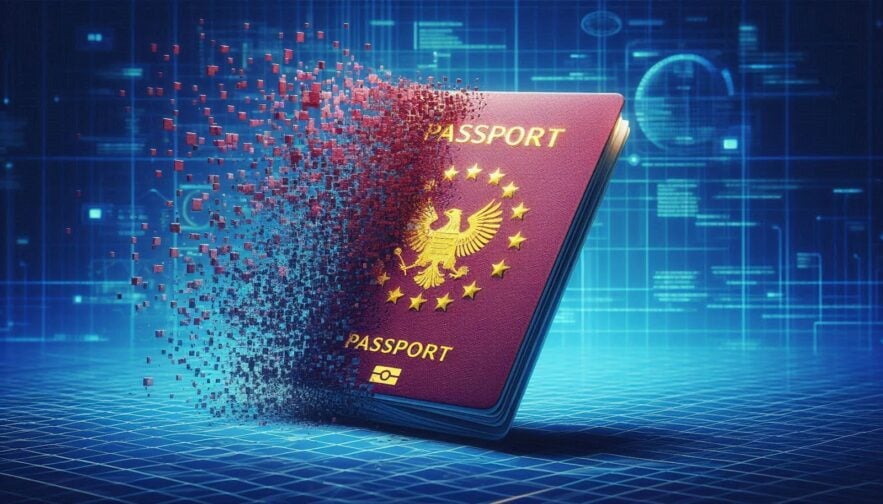Vancouver, Canada — On October 12, 2025, the European Union’s long-planned Entry/Exit System will begin its phased rollout, ushering in a new era of border management for travelers from outside the EU, European Economic Area, and Switzerland.
This shift will fundamentally change how millions of visitors are processed at land, sea, and air borders, replacing decades of manual passport stamping with biometric registration and automated tracking of entry and exit records. For travelers, families, and those who make regular trips to the Schengen area for business, education, or leisure, the implications are far-reaching. The system will require new behaviors at border crossings, changes to travel planning, and greater awareness of permitted stay limits.
The Entry/Exit System, known as EES, will apply to third-country nationals who visit the Schengen zone for short stays of up to 90 days within any 180 days. That includes travelers from countries that have long enjoyed visa-free access, such as the United States, Canada, the United Kingdom, Australia, and Japan. Once implemented, the EES will automatically collect facial images and fingerprints from travelers aged 12 and over, while children under 12 will undergo facial image capture only. The goal is to speed up border crossings in the long run while improving security and tracking overstays. Still, the first months of implementation are expected to bring longer queues and some confusion for unprepared passengers.
From October 12, travelers entering the Schengen area for the first time under the new system will be directed to self-service kiosks or staffed counters at airports, ferry terminals, train stations, and land borders. At these points, passports will be scanned, biometric data captured, and entry details recorded in a central database.
That record will remain valid for up to three years, meaning subsequent entries will be faster as the system can match new border scans with stored data. For travelers who make frequent trips to Europe, this means the most time-consuming part of the process will happen once, on the first trip after launch.
Authorities have confirmed that the rollout will be gradual. While the official start date is October 12, the EES will be introduced at different border points in phases, with complete implementation expected by April 10, 2026.
During the transition, some crossings may still use the traditional passport stamp alongside the new biometric system. This staggered approach is designed to reduce bottlenecks, but travelers are still being advised to arrive early for flights, ferries, or trains that enter Schengen territory during the first months.
For families, the requirements will differ depending on the ages of the children. Minors under 12 will not be fingerprinted but will still need a facial scan. Parents should prepare children in advance for the brief but unfamiliar process of having their photo taken at a border kiosk. Teenagers will need to follow the same procedures as adults, including fingerprinting. Families traveling together should expect their processing time to take longer than it did under the stamp-only system, especially on that first trip.
The shift to EES comes with significant compliance implications. The system is designed to enforce the long-standing 90-days-in-180 rule for short-stay visitors. Once a traveler’s biometric and passport data are recorded, any overstays will be automatically flagged. This could lead to fines, entry bans, or other penalties, depending on the country and the length of overstay.
It will also make it much harder for travelers to claim they were unaware of how many days they had spent in the Schengen zone. For families planning extended vacations, students attending short courses, or remote workers using tourist entry as a temporary stay, precise tracking of dates will become critical.
The launch of the EES also sets the stage for another significant change in European travel. The European Travel Information and Authorization System, or ETIAS, is expected to begin in late 2026. ETIAS will require visa-exempt travelers to apply for pre-authorization before entering the Schengen area. While the EES records entries and exits at the border, ETIAS will serve as a pre-screening system to assess eligibility before travel begins. The combination of EES and ETIAS represents a significant tightening of travel procedures compared to the previous system, where visa-free travelers only needed a valid passport and a stamp on arrival.
For now, the most pressing concern is avoiding unnecessary delays during the first months of the EES rollout. Border agencies in EU member states are preparing for longer queues and potential technical issues as the new system comes online. Some countries are expanding infrastructure at major airports and land crossings, adding kiosks, and deploying more officers to manage passenger flows. Others are running public information campaigns to alert travelers about the changes.

Case studies from previous border technology rollouts offer lessons for what to expect. When the United States introduced its US-VISIT biometric entry program in the early 2000s, first-time travelers often faced delays of up to 30 minutes at busy airports. Similarly, when the United Kingdom added biometric data collection for specific visa categories, processing times increased temporarily until travelers and staff adjusted to the new procedures. In both cases, efficiency improved once the majority of frequent travelers had completed initial registration. The EES is expected to follow a similar pattern.
A Canadian family planning a Christmas holiday in France provides a practical example. They will arrive in Paris in December, two months after the EES launch. On arrival, the parents and two teenagers will need to have fingerprints and facial images captured. Their younger child, aged 10, will only require a facial scan. The family should anticipate an extra 20 to 30 minutes at passport control for this first trip. On future visits, however, their biometric data will already be stored, and their processing time should be comparable to pre-EES levels.
In another scenario, a UK-based business consultant who visits multiple EU countries each quarter will encounter the EES in different forms during the rollout. On her first trip after October 12, she will register her biometric data in Amsterdam. Two months later, when she enters Madrid, the system will retrieve her stored record, allowing her to pass through more quickly. However, if she reaches the 90-day limit within 180 days, the system will automatically flag her for potential overstay, requiring her to exit the Schengen zone before re-entry is allowed.
Travelers should also be aware that not all border points will be equally prepared. High-volume airports and train stations are likely to have more advanced facilities and better-trained staff than smaller land crossings. Those traveling to the Schengen area by car through less-trafficked borders may find longer delays if there are fewer kiosks or only one staffed biometric station. Planning routes to enter through better-equipped entry points could reduce wait times during the first months.
Another critical factor is document readiness. Travelers must ensure their passports are valid for at least three months beyond their intended stay, as required under Schengen rules. Those holding long-stay visas or residence permits for Schengen countries are exempt from EES, but they must carry proof of their status. Without it, they may be mistakenly processed under the new system, leading to unnecessary delays.
While the EES represents a technological leap forward in border control, it also raises questions about data protection. The system will store biometric and travel data for up to three years, or five years in the case of recorded overstays. EU officials state that the system complies with the General Data Protection Regulation, with safeguards for access and use of personal data. Still, some privacy advocates have expressed concern about the scale of the database and the potential for misuse. For now, travelers can expect that their information will be handled within the strict legal framework of EU data protection law. Still, they should remain aware of how such systems evolve.
For families, the most effective preparation involves education and timing. Parents can explain the process to children before travel, emphasizing that the facial scan and fingerprints are quick and painless. Travelers can also build extra time into itineraries, particularly when connecting to onward flights or trains within Europe. Those traveling for urgent business or events may wish to arrive a day earlier than strictly necessary to avoid the risk of delays.
In the months before the launch, governments and airlines are expected to release more detailed guidance, including step-by-step explanations and videos showing the registration process. Airports and border agencies will likely post updates on wait times and procedures on their official websites and social media channels. Staying informed and adapting plans accordingly will be key to a smooth transition.
Ultimately, the EES is not designed to make travel harder but to modernize an outdated system. Once the majority of travelers have been enrolled, border crossings should become faster, more secure, and less dependent on manual checks. However, the adjustment period will test patience and planning skills for those traveling between October 2025 and early 2026.
Contact Information
Phone: +1 (604) 200-5402
Email: info@amicusint.ca
Website: www.amicusint.ca



